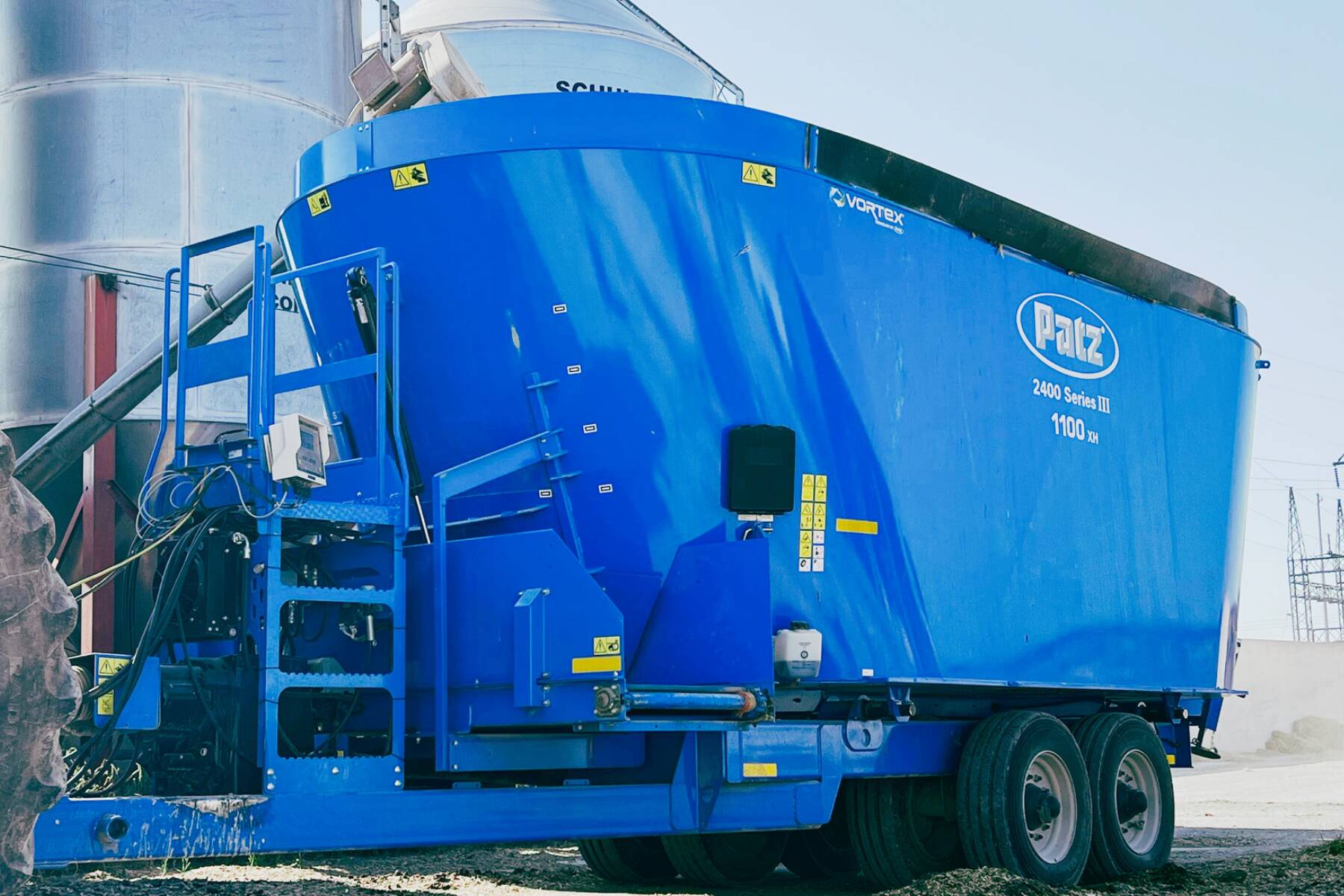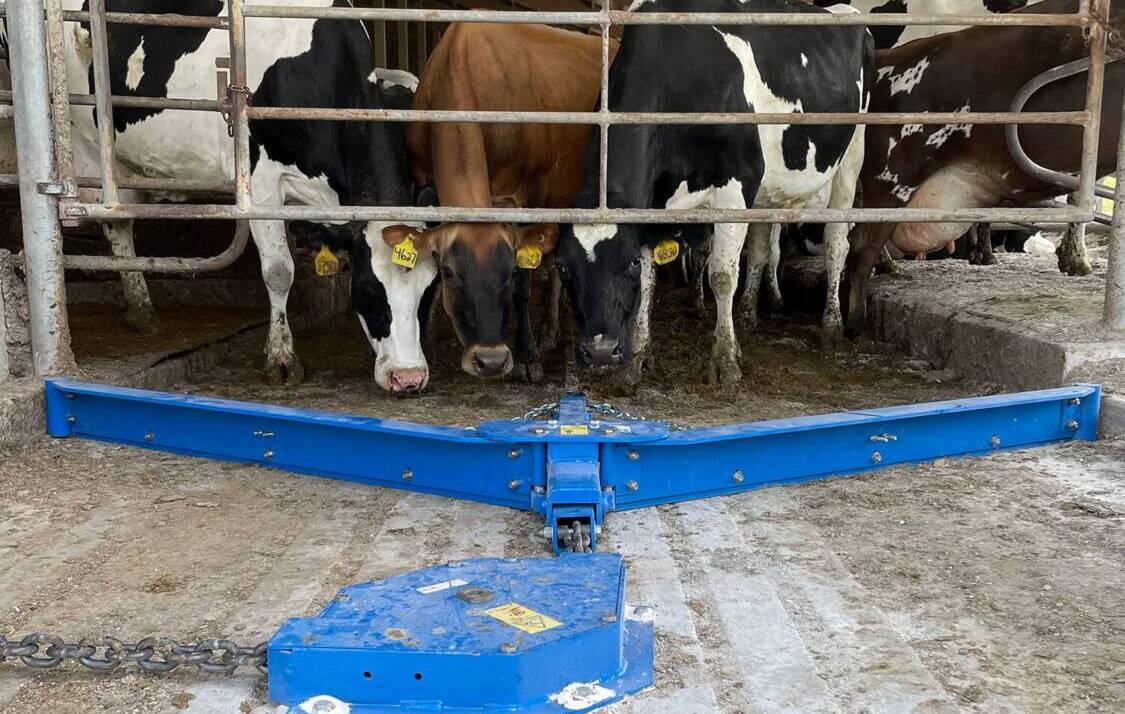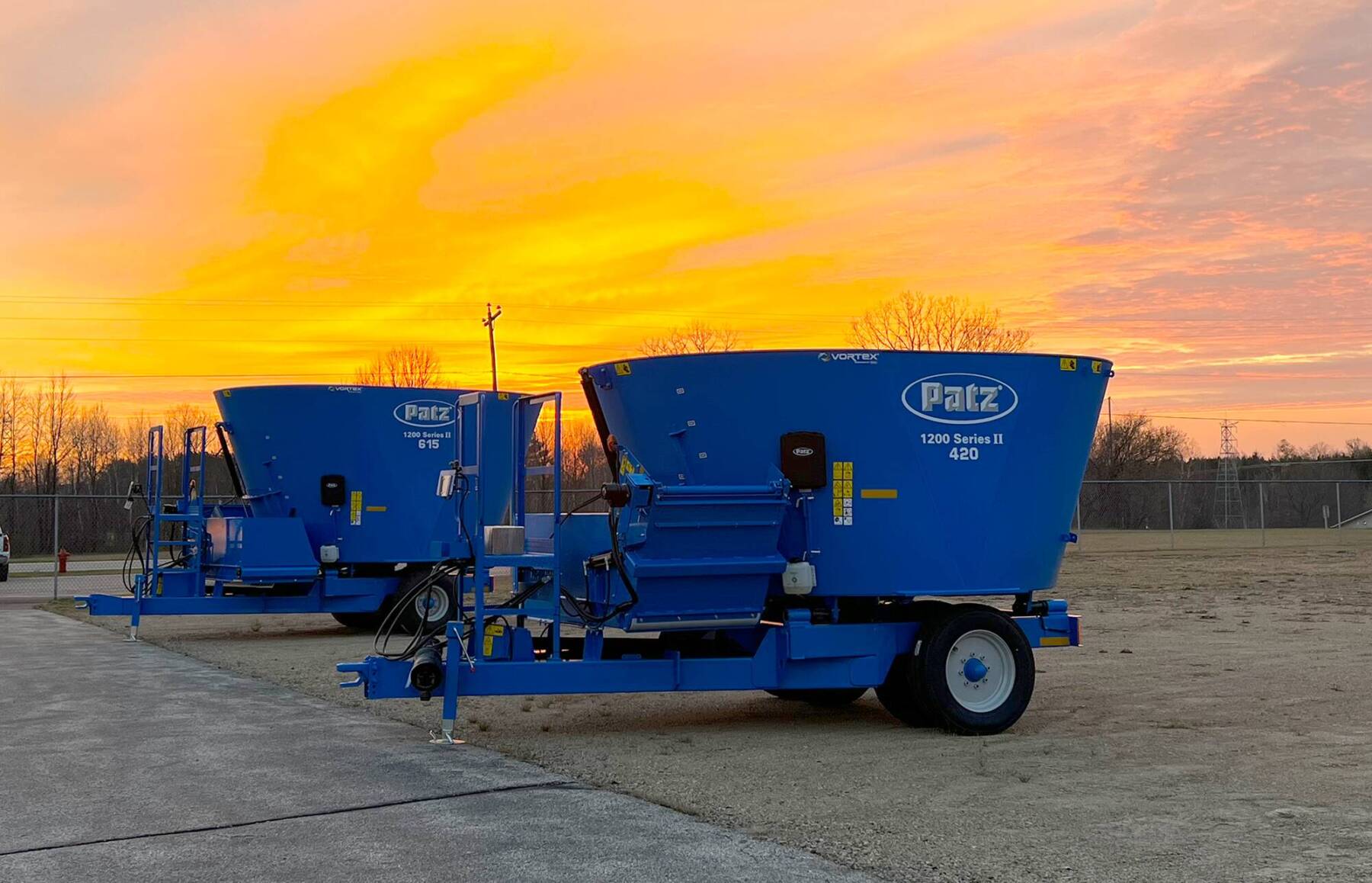
10 FEATURES TO CONSIDER WHEN PURCHASING A TMR VERTICAL MIXER
Are you in the market for a vertical mixer? Just like buying a car, there are a lot of criteria to think about and take into consideration to reach a decision. Do your homework. Educate yourself by visiting websites, talking to your local Dealer, studying mixer specifications, requesting a demo, and talking to your neighbor. Remember, no two farms are the same. Create a list of features that are important to you and your farm layout. As you review the information and narrow down your options, be sure the mixer meets your criteria and checks all the needed boxes.
The information below highlights important features identified by previous buyers. Whether it’s your first or fifth purchase, we hope this article helps you select the right mixer for your operation.
- Longevity: Quality. Durability. Craftsmanship. A well-made vertical mixer is going to own these attributes – all which contribute to its longevity. In addition to having a mixer with a reputation for longevity, pay attention to the history of the manufacturer. The number of years they’ve been in business speaks volumes. If they’ve weathered the ups and downs of the economy and kept pace with the industry trends, there’s a good chance that they are solid, respected, offer a quality product, and deliver on their customer service.
- Mixing Time: How long does it take to mix feed? The faster feed gets loaded and mixed, the quicker feeding gets done. Manpower is needed to feed the herd: a person to load the mixer and a person to drive the tractor. If mixing times are reduced, that saves time and money. As the saying goes, ‘Time is money’. A mixer that can produce a quality TMR in the least amount of time saves on labor costs, and it puts less hours on your tractor.It’s natural to believe that the mixer with the fastest rotating screws will achieve the quickest and highest quality TMR. That is not necessarily true though. Mixing time, or the time it takes to obtain a high quality TMR, is more than just how fast the screws rotate. There are screw and mixing chamber designs engineered to be more efficient when running at slower speeds. They require less horsepower, use less fuel, take less time, produce a palatable, consistent, and most importantly, an efficient TMR.
- Discharge: How efficiently can feed be distributed? The focus tends to be on how fast the mixer discharges feed. Expand that thought to include accuracy. Feeding is not only about how fast the feed gets out of the mixer. It’s also about how accurately the feed is delivered. With tub mount discharges, the operator can monitor the weight on the conveyor. This gives the operator more control over the feed delivery and is helpful when individual pens are used. In addition to speed and accuracy, also factor in clean-out. Does the mixer have superior clean-out? Feed is 65% of operating costs. You don’t want any money, i.e. feed, left in the tub to spoil. A good cleanout with minimal feed residue provides better balanced rations, batch integrity, and nutrient cost control.
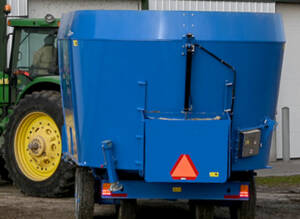
- Capacity – expansion. Is your mixer set-up to accommodate an increase in herd size? If you have plans to grow your herd, look for a mixer that can grow with you. There are base unit vertical mixers that are designed to add mixing capacity and volume with an addition of a size kit. This would allow you to scale your mixer and herd size simultaneously.
- Replacement Parts. Mechanical breakdowns translate into lost time and lost money. When you’re in the market for a mixer, consider the maintenance and replacement costs associated with it. Does the manufacturer use quality parts and components? If they use heavy-duty and durable parts, this can lengthen the lifespan of the equipment and provide peace of mind.
At some point, parts will need to be replaced due to normal wear and tear. When replacement parts are needed, are they readily available and easy to find? Is there a knowledgeable and attentive Technical Support department available? Do you have access to detailed Operator’s and Parts manuals? Minimize costly downtimes by partnering with manufacturers and dealers who pride themselves on technical support, customer service, quality components, and plentiful inventory. Mechanical breakdowns translate into lost time and lost money. Feeding cannot wait.
- Consistency.
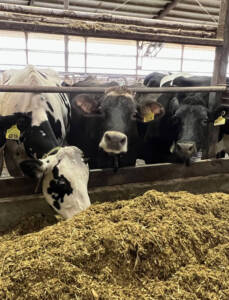 A mixer that delivers a consistent TMR mix, day after day, week after week, is priceless. Consistently feeding your herd the same mix helps with their digestion, increases milk production, provides a better-quality milk, and maintains overall herd health. An imbalance of ingredients can affect digestion, the quantity AND quality of your milk, and your bottom line. A healthier herd eating a balanced and palatable diet is going to produce a higher-grade milk and more of it.
A mixer that delivers a consistent TMR mix, day after day, week after week, is priceless. Consistently feeding your herd the same mix helps with their digestion, increases milk production, provides a better-quality milk, and maintains overall herd health. An imbalance of ingredients can affect digestion, the quantity AND quality of your milk, and your bottom line. A healthier herd eating a balanced and palatable diet is going to produce a higher-grade milk and more of it.
- Resale Value. When you have outgrown your current mixer and are in the market for a new one, what’s the value of your existing mixer? As with automobiles, some manufacturers possess a greater resale value than others. Do your research and analyze the resale value of used mixers.
- Heavy Duty. Are the side walls and floor thick enough to endure the usual wear and tear of farm life? Is the rim durable to withstand multiple loadings? Is the undercarriage built to withstand your environment? A heavy-duty mixer made with heavy-duty parts will serve you well, especially in climates where there are big temperature swings.
- HP Requirements. Mixers have different HP requirements. Be sure to know your tractor or truck capabilities when looking at mixers to make sure the HP requirements align. Two-speed and three-speed transmissions are easier on tractors and allow a smaller horsepower tractor to effectively mix. Keep in mind that if your TMR Vertical Mixer and Tractor HP are not in sync, your ration quality, mixing and feeding times, the health of your herd, and quality and quantity of milk could all be impacted.
- Budget. When making a purchase of any size, price seems to be the first thing people look at. While it’s easy to think short-term and only consider the price tag, it is equally important to think long-term. Is it worth spending more on a reliable, fast, and efficient mixer that will save you money on labor, fuel, and feed costs? If a mixer produces a balanced and palatable ration, there is less sorting and less feed waste. It also means that your herd is getting their necessary ingredients and vitamins; therefore, improving the quality and quantity of milk production. When feed is 65% of your operating costs, less feed waste can really boost your bottom line. The long-term effects of the mixer always should be included in your analysis.
Every farm operation is unique and has different needs. The features outlined above are not all-inclusive. We recommend that you modify the list based on your farm layout and needs.
###



